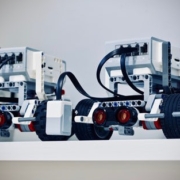In this article, I will describe how analytics is related to Machine Learning. I’ll try to demystify some of the nonsense around ML, and explain the process and types of machine learning. Finally, I’ll share a couple of videos which describe the next level of Artificial Intelligence – Deep Learning.
Don’t worry if you’re not an artificial intelligence expert — I won’t ever mention Linear Regression and K-Means Clustering again. This is an article in plain English.











